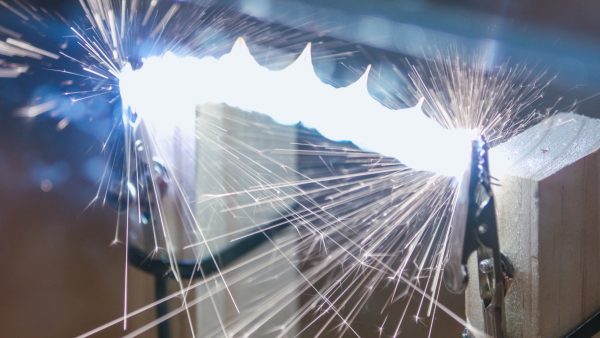Circuit Definition
A circuit is a path that can allow electricity to flow, if closed. For example, a simple circuit could be a wire connected end-to-end.
View Lesson on Electricity & Circuits
Become a member to get full access to our entire library of learning videos, reading material, quiz games, simple DIY activities & more.
Become a member to get full access to our entire library of learning videos, quiz games, & more.
Plans & Pricingto watch this full video.

Access All Videos
and Lessons, No Limits.
Access All Videos

No credit card required,
takes 7 sec to signup.
No card required

Ready-to-go lessons
that save you time.
Ready-to-go lessons
If you are on a school computer or network, ask your tech person to whitelist these URLs:
*.wistia.com, fast.wistia.com, fast.wistia.net, embedwistia-a.akamaihd.net
Sometimes a simple refresh solves this issue. If you need further help, contact us.
Electricity & Circuits
Fun Facts
- Electricity flows through conductors, not through insulators.
- Circuit boards allow allow of the components to be integrated into a small package.
- A series circuit only has one path, while parallel circuits have multiple paths.
Why Do We Need To Know About Circuit
Learning about circuits helps you understand how things like smartphones and laptops work. It’s important because electrical engineers use circuits to make all kinds of things, from electric cars and computers to things that help people, like artificial limbs and systems that keep our lights on. Circuits are important in making new medical tools and making computers and gadgets smaller and better.
Advancements in developing microcircuits greatly reduced the size of many devices. For example, the first computers were the size of a room, but now we can hold a computer much more powerful than those in the palm of our hands! Knowing about circuits is key for people who want to create new technologies and make life better.
Frequently Asked Questions
Check out the Full Lesson on Electricity & Circuits
In this lesson, we learn that:
- Electricity is the flow of electrical energy from one place to another.
- Electricity flows through conductors, but it cannot flow through insulators.
- A closed circuit is needed for electricity to flow and power our electronics.
Related Topics
- Absorbency Definition
- Algae Definition
- Amplitude Definition
- Astronomy Definition
- Balanced Force Definition
- Batteries Definition
- Biotechnology Definition
- Body Fossils Definition
- Chemical Reaction Definition
- Circuit Definition
- Collision Definition
- Conductor Definition
- Definition Of Engineering
- Definition Of Extreme Weather
- Definition Of Non-living Things
- Definition Of Nutrients
- Digestive System Definition
- Dissolve Definition
- Electricity Definition
- Electromagnetic Spectrum Definition
- Element Definition
- Energy Conversion Definition
- Engineer Definition
- Environment Definition
- Extinct Definition
- Freezing Definition
- Gas Definition
- Glacier Definition
- Insulator Definition
- Light Definition
- Limited Resource Definition
- Motion Definition
- Mutualism Definition
- Natural Selection Definition
- Nervous System Definition
- Newton’s 1st Law Of Motion Definition
- Organ Definition
- Paleontologist Definition
- Physical Change Definition
- Push Definition
- Recycle Definition
- Rock Definition
- Season Definition
- Snow Definition
- Taxonomy Definition
- Trait Definition
- Volts Definition
- Weather Front Definition


Start a Free Trial Today. Get a $5 Amazon Gift Card!
Teachers! Start a free trial & we'll send your gift card within 1 day. Only cards left. Try it now.
Select Grade
Select Subject
This email is associated with a Science Kit subscription. Kit subscriptions are managed on this separate page: Manage Subscription

-
Download InvoiceScience & Math$/yr
-
Download InvoiceScience Only$/yr

access all lessons
• No credit card required •
"My students loved the videos. I started the video subscription in May and used them as a review before the state test, which I know contributed to 100% of my class passing the state test."
Rhonda Fox 4th Grade Teacher, Ocala, Florida
Use Generation Genius in Your School
Access all lessons free for 30 days.
"My students loved the videos. I started the video subscription in May and used them as a review before the state test, which I know contributed to 100% of my class passing the state test."
Rhonda Fox 4th Grade Teacher, Ocala, Florida
• No credit card required •
Already a member? Sign In
* no credit card required *

* no credit card required *
* no credit card required *

Get District Quote
Discounts start at 3 schools.
Sent!
Thank you for your inquiry.
We will email you a quote as soon as we can.

to Discover the Benefits of Generation Genius
Learn How to Save for Your School & District!
Please login or create an account to access additional resources

no credit card required
Skip, I will use a 3 day free trial
Enjoy your free 30 days trial
-
Unlimited access to our full library
of videos & lessons for grades K-5. -
You won’t be billed unless you keep your
account open past your 14-day free trial. -
You can cancel anytime in 1 click on the
manage account page or by emailing us.
-
Unlimited access to our full library of videos & lessons for grades K-5.
-
You won't be billed unless you keep your account open past 14 days.
-
You can cancel anytime in 1-click on the manage account page.
Cancel anytime in 1-click on the manage account page before the trial ends and you won't be charged.
Otherwise you will pay just $10 CAD/month for the service as long as your account is open.
Cancel anytime on the manage account page in 1-click and you won't be charged.
Otherwise you will pay $10 CAD/month for the service as long as your account is open.
We just sent you a confirmation email. Enjoy!
Done



























































































































 GENERATION GENIUS
GENERATION GENIUS